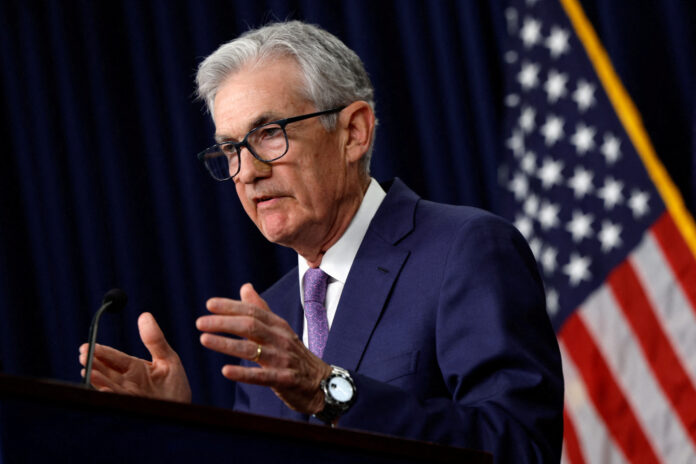
Federal Reserve Chair Jerome Powell’s recent testimony before US lawmakers has given hope to those anticipating a shift in the central bank’s monetary policy. His remarks suggest that the pivotal moment for easing could come as soon as September. While the fight against inflation is ongoing, Powell indicated that it is moving toward the Fed’s 2% target and that continued positive data will bolster their confidence in this trend. Let’s explore the implications of a potential policy shift and the broader economic landscape.
Insights from Powell’s Testimony
Powell’s testimony was highly anticipated, with market participants and policymakers keen to understand the Fed’s stance on future monetary policy. Powell struck a balanced tone, acknowledging both the progress made in curbing inflation and the challenges that remain. His comments were cautiously optimistic, suggesting that while inflation has not yet been fully tamed, it is heading in the right direction.
1. Inflation Trends: Powell noted that inflation is showing signs of easing, with recent data indicating a gradual decline. This is crucial as sustained inflationary pressures can erode purchasing power and destabilize the economy. The Fed’s target of 2% inflation is considered ideal for promoting stable economic growth without igniting excessive price increases.
2. Economic Data: Powell emphasized the importance of ongoing positive economic data in reinforcing the Fed’s confidence in the downward inflation trend. This includes indicators such as consumer prices, employment rates, and GDP growth. Consistent improvement in these areas would support the case for easing monetary policy.
3. Policy Implications: Powell’s remarks suggest that the Fed is not yet ready to declare victory over inflation but is closely monitoring the data to determine the appropriate timing for policy adjustments. This nuanced approach reflects the complexity of managing monetary policy in a dynamic economic environment.
The Case for Easing Monetary Policy
The prospect of the Federal Reserve easing its monetary policy has significant implications for the economy. Here are several key factors that underscore the case for policy easing:
1. Economic Growth: Easing monetary policy can stimulate economic growth by making borrowing cheaper for businesses and consumers. Lower interest rates encourage investment and spending, which can drive economic expansion. This is particularly important in the aftermath of economic disruptions caused by the COVID-19 pandemic.
2. Employment: Lower interest rates can also support job creation by encouraging businesses to expand and hire more workers. This is crucial for achieving the Fed’s dual mandate of promoting maximum employment and stable prices. With unemployment rates still recovering from pandemic-induced highs, easing monetary policy could help accelerate the labor market recovery.
3. Market Stability: Clear communication from the Fed regarding its policy intentions can enhance market stability. Investors and businesses value predictability, and Powell’s testimony provides insights into the Fed’s thinking. By signaling a potential shift towards easing, the Fed can help anchor market expectations and reduce uncertainty.
4. Global Considerations: The actions of the Federal Reserve have global ramifications, given the central role of the US dollar in international finance. Easing monetary policy in the US can influence global capital flows and exchange rates. This can have both positive and negative effects on other economies, highlighting the interconnectedness of the global financial system.
Challenges and Risks
While the potential for easing monetary policy is enticing, it is not without challenges and risks. The Federal Reserve must navigate a complex landscape to achieve its objectives:
1. Inflation Persistence: Although inflation is showing signs of easing, there is no guarantee that this trend will continue. Supply chain disruptions, geopolitical tensions, and other factors could reignite inflationary pressures. The Fed must remain vigilant and be prepared to adjust its policy stance if necessary.
2. Financial Stability: Rapid changes in monetary policy can have unintended consequences for financial stability. Sudden shifts in interest rates can impact asset prices, debt levels, and market sentiment. The Fed must carefully calibrate its actions to avoid destabilizing financial markets.
3. Credibility: The credibility of the Federal Reserve is paramount. If the Fed moves too quickly to ease policy and inflation resurges, it could undermine confidence in its ability to manage the economy. Conversely, if it delays easing for too long, it risks stifling economic growth and prolonging the recovery.
4. Global Impact: The Fed’s actions have ripple effects across the global economy. Easing monetary policy could lead to capital outflows from emerging markets, currency volatility, and other disruptions. The Fed must consider these broader implications when formulating its policy decisions.
The Path Forward
Jerome Powell’s testimony provides valuable insights into the Federal Reserve’s current thinking and its approach to managing inflation and economic growth. While the path to policy easing is not yet clear, Powell’s comments suggest that the Fed is closely monitoring the data and remains cautiously optimistic about the prospects for inflation to move toward its target.
The coming months will be crucial in determining the trajectory of US monetary policy. Continued improvement in economic indicators, coupled with prudent risk management, will be essential for the Fed to navigate the challenges ahead. Stakeholders, including businesses, investors, and policymakers, will be watching closely for further signals from the Fed as it balances its dual mandate of promoting maximum employment and stable prices.
Jerome Powell’s latest hint of potential easing of monetary policy offers a glimmer of hope for those awaiting a shift in the Federal Reserve’s stance. While challenges remain, the progress made in curbing inflation and the Fed’s cautious optimism provide a foundation for considering policy adjustments. As the economic landscape evolves, the Fed’s measured approach will be key to achieving its objectives and fostering a stable and prosperous economy.
Disclaimer: The thoughts and opinions stated in this article are solely those of the author and do not necessarily reflect the views or positions of any entities represented and we recommend referring to more recent and reliable sources for up-to-date information.


